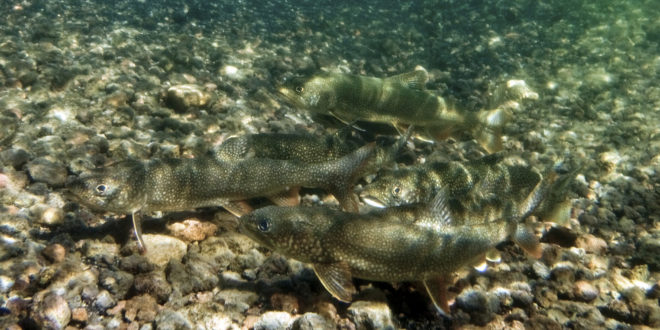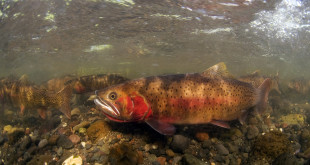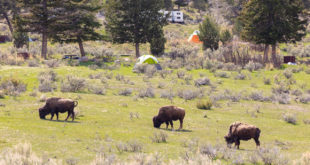Laser technology from Montana State University (MSU) could help park fishery employees remove invasive lake trout from Yellowstone Lake.
And before you ask: no, it’s not a death ray.
According to MSU News Service, the school’s laser technology functions similar to radar and would help crews locate lake trout-rich areas of the lake:
During recent flights over Yellowstone Lake in a small aircraft, MSU’s device was able to identify clusters of two or more lake trout to a depth of at least 26 feet, according to Joe Shaw, professor of electrical engineering in MSU’s Norm Asbjornson College of Engineering and co-author of a May 20 article describing the findings in the journal Applied Optics.
The lidar technology — so called because it operates similarly to radar by measuring reflections of harmless, non-visible pulses of laser light — could be used to more easily determine areas to target with gill netting, the main method that park managers use to capture non-native lake trout in an attempt to reverse the decline of native Yellowstone cutthroat trout, according to co-author and Yellowstone fisheries biologist Patricia Bigelow.
“It has the potential to be a great tool,” Bigelow said.
With the start of the summer season (and the start of fishing season) just a few days away, fishery employees are gearing up for another season of trout management. Fishery crews have a number of tools and methods at their disposal, including transmitters implanted into lake trout that help crews track where spawning beds are in the lake.
According to Bigelow, the lidar laser technology could save crews time and money, since surveys can be conducted via airplane. Currently, crews follow transmitters using boat-mounted acoustic sensors, which takes far longer. From MSU News Service:
“Two big plusses of using he lidar tool are that we could fly the whole lake in a couple hours and that we could detect any fish in shallow water, not just the ones that have transmitters,” which could save time and money, Bigelow said.
Shaw said he was excited to see the project come to fruition after more than a decade of research and development. Prior to joining the faculty in MSU’s Department of Electrical and Computer Engineering in 2001, he collaborated with National Oceanic and Atmospheric Administration physicist and co-author Jim Churnside on the use of lidar for detecting ocean fish. When Shaw presented the research shortly after arriving at MSU, someone mentioned that it might also be applied to lake trout in Yellowstone, he recalled.
In 2004, Shaw borrowed NOAA’s fish-detecting lidar device — which was so large that it had to be flown in a multi-propeller plane — and conducted a trial run over Yellowstone Lake. The results were promising enough that park managers decided to send gill netting boats to a remote part of the lake where they otherwise seldom operated, according to Bigelow. The boats captured many lake trout in a short time, she said.
Shaw added that, following the 2004 trial run, he designed it so the tool could fit in a single-engine Cessna, which he says is more affordable and appropriate for surveying something like Yellowstone Lake.
Shaw said he hopes the tool is incorporated into other conservation and scientific efforts in Yellowstone. “I’m delighted that we can do something useful for the Yellowstone ecosystem, because it’s a special place,” Shaw said.
 Yellowstone Insider Your Complete Guide to America's First National Park
Yellowstone Insider Your Complete Guide to America's First National Park





